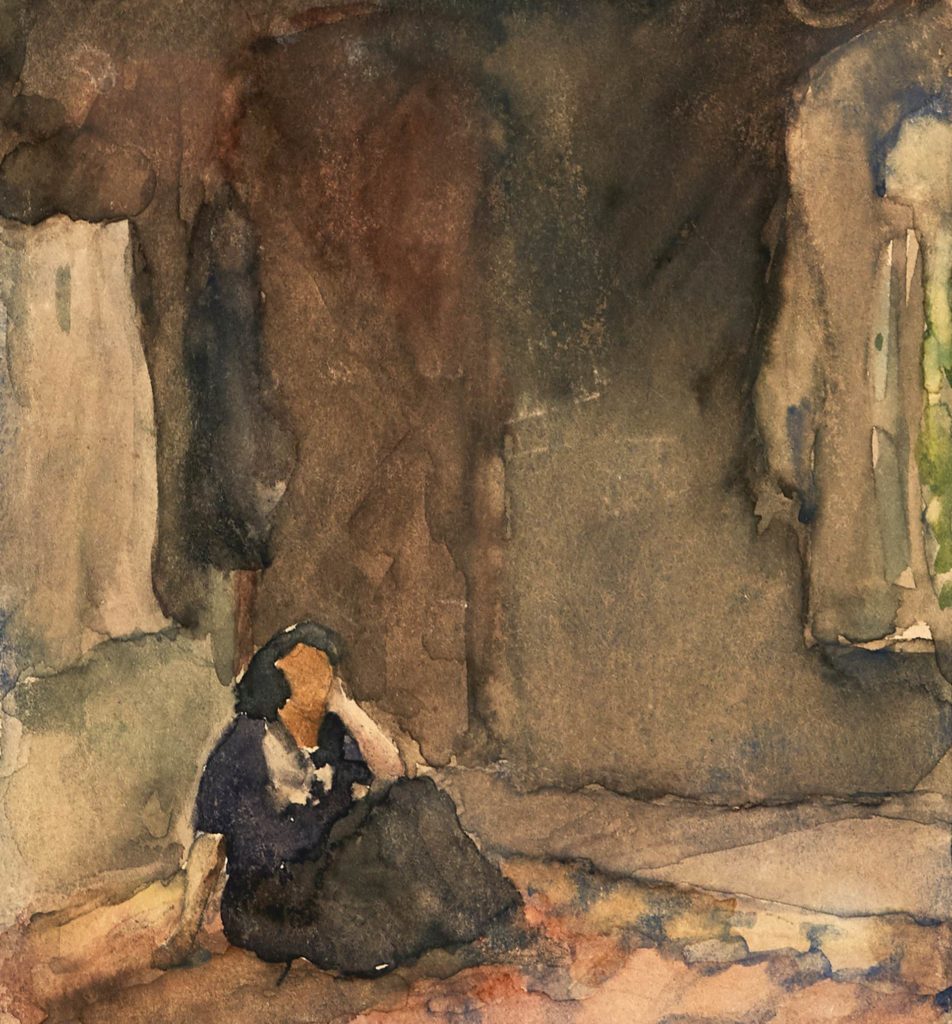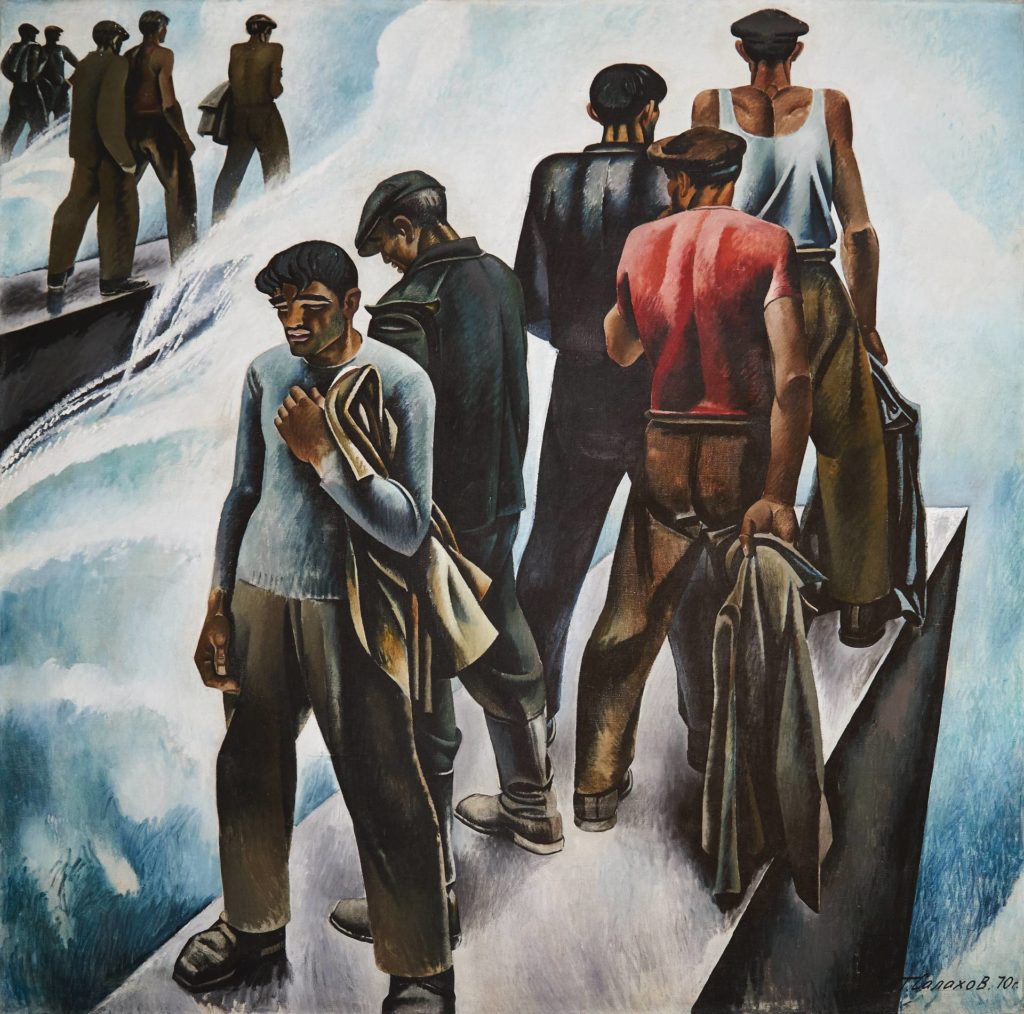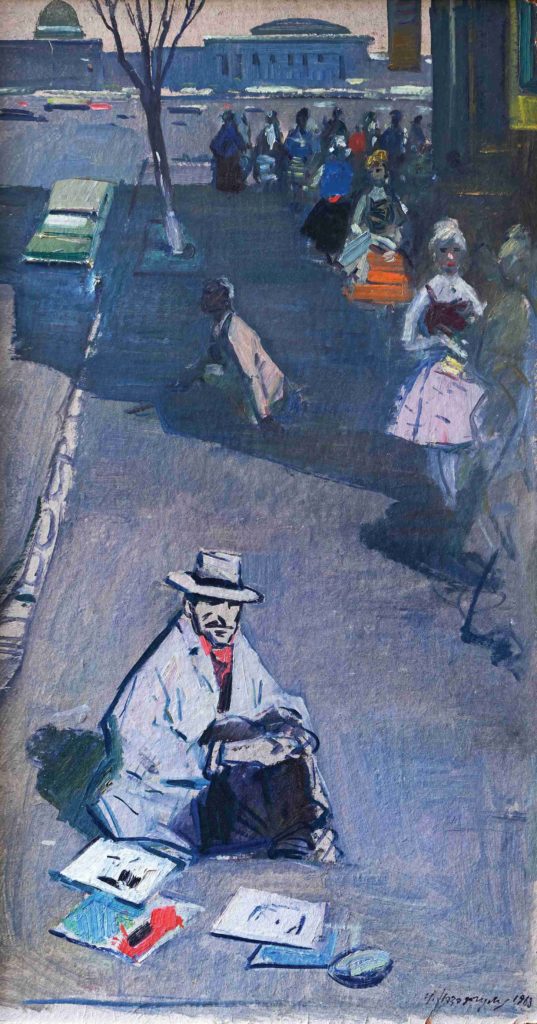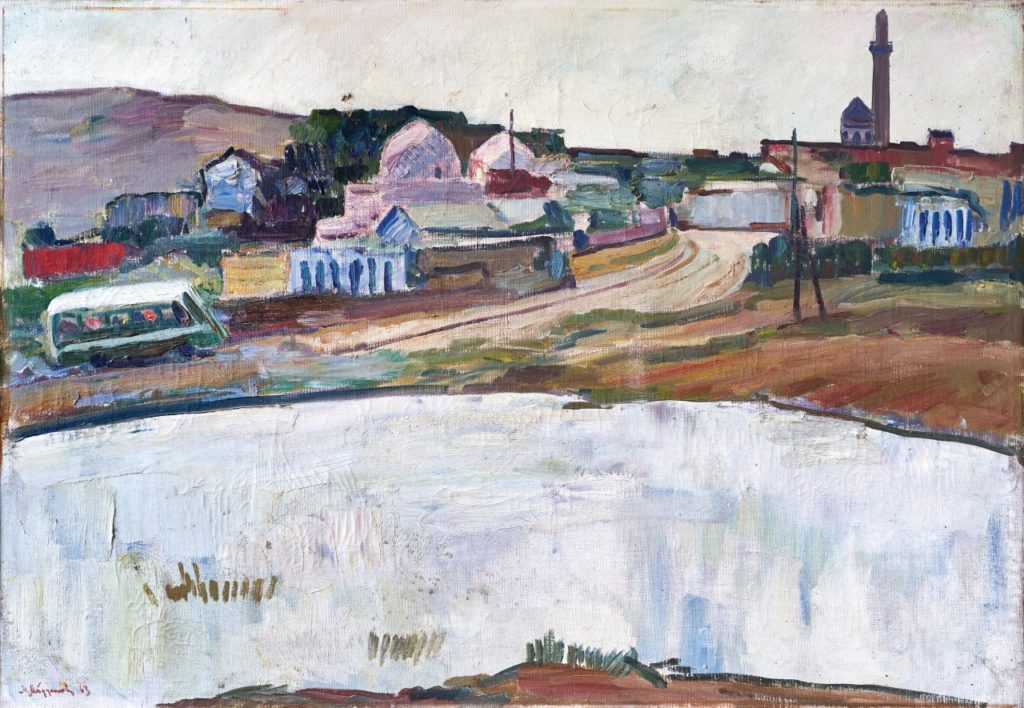Of all the kinds of fine arts in Azerbaijan, painting certainly is the most striking, multifaceted and distinctive phenomenon. It is painting that to the maximum extent reflects all the key stages of the country’s development, and, along with it, the development of artistic mentality mostly consonant with its time.
The easel painting itself was formed in the Azerbaijani art school after 1920. The Art Studio organized this year was soon transformed into the Higher Art Workshops, and then, in 1922, the Higher Art School. Subsequently, this school became the basis for the opening of the Azerbaijan Art School in 1940.
The most important event of the Azerbaijani artistic life was the establishment of the Union of Soviet Artists of Azerbaijan in 1932.
Proficiency of realistic portraying of the world around had remained a fundamental task for masters of painting for several decades. The most important factor here was the continuation of education by the large group of graduates of the Art School in Baku in the Higher Education Art Schools in Moscow and Leningrad (now St. Petersburg) in the mid-to-late 1930s. Among them were Mikayil Abdullayev, Boyukagha Mirzazade, Baba Aliyev, Latif Feyzullayev, Taghi Taghiyev, Eyyub Mammadov, Gafar Seyfullayev, and a number of others. It was this galaxy of artists who were destined to determine, for many years, the main paths of the development of the Azerbaijani fine art.
Narrative, clarity, stateliness… Everything must correspond to once given idea – which was the idea of a “new” people’s state, a “new” way of life, a “new” person… But it is important to remember another conclusion: not ideology or plots illustrating it makes ultimately up the essence of art. Quality, that is, the conformity of a work to certain artistic and aesthetic criteria – that’s what time remembers and what remains in history.
Today, referring to various public and private collections, one can judge how diverse and truly high-quality the art products of those years were. The names listed above belong to the artists who rightfully took their worthy place in the history of the Azerbaijani painting. The finest colorists, virtuosos of drawing, brilliant masters of realistic composition… Portraits – of contemporaries or literary characters, landscapes, still lifes, everyday scenes… Most of the works shown in this portal are real masterpieces that have already “outlived” their time and deserve to be considered the “Golden Fund” of the national artistic heritage.
In the late 1950s and early 60s, certain changes associated with a number of political and social factors took place in Soviet art, including Azerbaijani art. The initiator of the changes was the young generation – the so-called “generation of Sixties”. The essence of the new art was the expression of the “harsh truth of life”. In fact, opposing the foundations of “socialist realism”, that is, the “gracious” display of the socialist way of life, the “generation of Sixties” sought to change the artistic language that, with its monumental, public and oratorical content, should adequately reflect the images of labour people struggling with adversity and being endowed with a strong character and unbending will. It was a rebellion against illustrative and prosaic descriptiveness in art. The very principle of interpreting reality has been changed. The pathos of glorifying the Soviet way of life gave way to a true display of hard working conditions. On the other hand, the artists’ interest in folk forms along with the folklore images as an embodiment of national identity were revived, so in fact, it was then – in the 1960s – that crystallization of national art schools took place.
In the Azerbaijan school, these key changes are associated with the names of T. Salahov, T. Narimanbeyov, R. Babayev, N. Abdurrahmanov, A. Jafarov, and a number of other artists. In their works, they began actively develop new means of artistic expression that corresponded to the changing nature of the era itself. To a great extent, the renewed language of art was saturated with symbolic meaning, the forms were getting monumental and generalized, and it is not by chance that “severe style” legalized in art criticism was otherwise being called the “style of laconic forms.” Another – folklore (or – primitivist) trend is associated with the wide spread introduction of folk types together with themes of folk customs and holidays, presented in a popular, nationally-stylized manner, into the art.

“In the room”.
Paper, watercolor. 15×13 cm
From now on, the Azerbaijani painting finds its “face” in the form of harsh images of courageous “oil workers of the Caspian Sea”, on the one hand, and life-affirming still lifes saturated with a bounty of colors and made up of “gifts of sunny Azerbaijan” on the other. These two motifs, which have received a diverse interpretation in various kinds of Fine arts (first of all, in painting and graphics), constitute a significant layer of the Azerbaijani art to this day.
On the other hand, turning to the problems of the relationship between man and nature, a tendency to dissent and allegory, along with an inclination to philosophical reflections on the “problems of being” and a filling one’s paintings with fantastic images, distinguished the artistic manner of a number of other artists who remained on the “sidelines” of the official art panorama for a long time. Javad Mirjavadov, Gorkhmaz Efendiyev, Tofig Javadov, Ashraf Muradoglu, each possessing a bright creative individuality, did not fit into the stereotypes officially prescribed by state policy in the field of art, on the one hand, and those figurative “clichés” that were imposed on Azerbaijan school of painting by “center” – on the other. The above listed artists did not have a common art platform. Nevertheless, there was something that united them all, the like-minded people, who also included Rasim Babayev, Elchin Aslanov, Fazil Najafov.
This “something” was associated with the fundamental de-ideologization of art, the concentration on purely creative problems. The meaning and content of the works were determined solely by artistic tasks, not by the socio-political situation in the country. For these artists, to create was to live. Painting was the only that was real and important to them. There was no question of what exactly to draw about, but only how. How, by what way in the two-dimensional plane of the painting one should have conveyed the whole-ness of ideas, all that haunted the heart and mind? Everything was embodied through color: composition, images, character, content.
It was this circle of artists that became the center of attraction of the brightest, most active representatives of the next generation – the “generation of seventies”, whose creative program determined the “face” of Azerbaijani painting of all subsequent decades, up to the present. Kamal Ahmadov, Farhad Khalilov, Mir Nadir Zeynalov, Nazim Rahmanov, Aliovsat Aliyev, Eldar Gurbanov, Faig Aghayev, Gayyur Yunus, Rafael Muradov, Rashid Ismayilov, and a number of others… Being bright artistic individuals, each of them retained and asserted the quality in its own way , which, in our opinion, is typical of the modern Azerbaijani school of painting. These are the fundamental and consistent apoliticism, the concentration on one’s inner world, the enrichment of creativity with philosophical significance and spiritual beauty, combined with an unceasing interest in formal-artistic problems. This is what makes the modern Azerbaijani school, as an aggregate of original personalities, an independent and vivid artistic phenomenon.
Traditional means of expressiveness have been increasingly gaining autonomous significance. And over the years, in the works of subsequent generations – of 1980s, 1990s, 2000s – this trend was filling with “flesh and blood”, becoming typical for the modern Azerbaijani school of painting. Painting as a process, as an act of birth of harmony from chaos – that’s what is important, that’s what makes up the essence of an organism of painting. Increasingly, the expressiveness of images was built on a coloristic and textured solution. More and more the space, the background were given the role of the emotional environment that determined the overall structure of the work.
Not a depiction, but an expression of feelings, emotions, moods – that is what becomes the main point. One way or another, this principle has become decisive for many authors whose works are presented in this section. It is this principle that unites them all – the representatives of different age categories: Altay Sadigzade, Ali Ibadullayev, Anvar Asgarov, Rashid Ismayilov, Irina Eldarova, Huseyn Hagverdiyev, Elyar Alimirzayev, Zakir Huseynov, Soltan Garayev, Mahmud Rustamov, and some others… Each of them is endowed with an individual, original talent. Each has its own favorite technique and its own circle of images.
But there is a certain set of traits that makes them all contemporaries, people of the same time. They seek to reveal the contradictory and diverse phenomena of modern life through the character of color, the brushstrokes, through the expressiveness of compositional shifts and unexpectedness of formal methods applied. The internal structure of work is becoming more confessional, intimate, and the images themselves are full of mystery and latency. Objects, people, the environment in which they live, appear as something innermost, miraculous, and therefore – not fully cognizable.
Many of the above mentioned artists work in a wide variety of materials and techniques, including forms of conceptual art. Individual kinds of creativity interpenetrate each other more and more, and artists of various “specialties” freely migrate from one sphere of art to another. This process is especially evident in the examples of Azerbaijani graphics.


